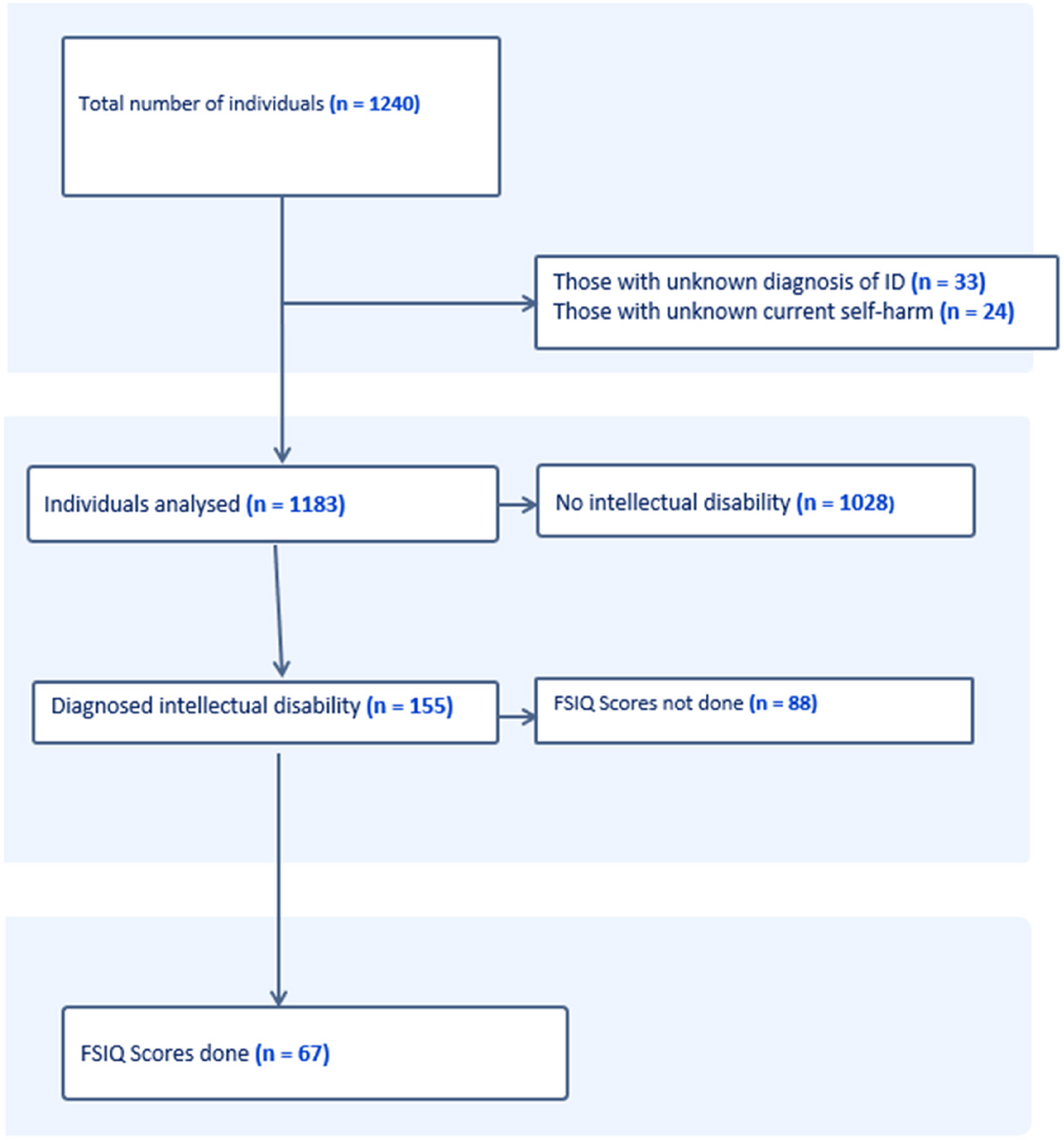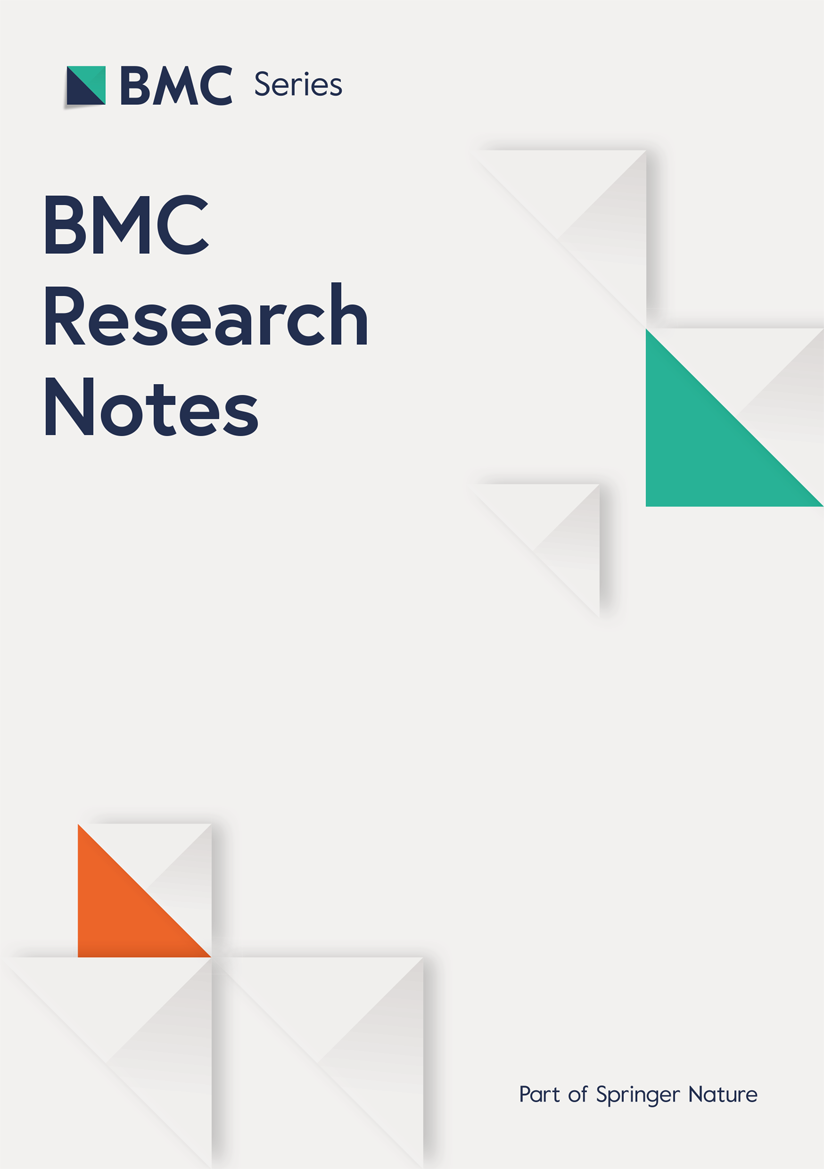Ray I, Simpson AIF, Jones RM, Shatokhina K, Thakur A, Mulsant BH. Clinical, demographic, and criminal behaviour characteristics of patients with intellectual disabilities in a Canadian forensic program. Front Psychiatry. 2019;10:760.eCollection 2019. https://doi.org/10.3389/fpsyt.2019.00760.
Chester V, Völlm B, Tromans S, Kapugama C, Alexander RT. Long-stay patients with and without intellectual disability in forensic psychiatric settings: comparison of characteristics and needs. BJPsych Open. 2018;4(4):226–34.
Article
PubMed
PubMed Central
Google Scholar
Kaggwa MM, Chaimowitz GA, Erb B, Prat S, Davids A, Moulden H, et al. Self-harming behaviors and forensic system-related factors: an analysis of the Ontario review board database. BMC Psychiatry. 2023;23(1):913.
Article
PubMed
PubMed Central
Google Scholar
Quinn S, Rhynas S, Gowland S, Cameron L, Braid N, S OC. Risk for intellectual disability populations in inpatient forensic settings in the united kingdom: A literature review. J Appl Res Intellect Disabil. 2022;35(6):1267–80.
Article
PubMed
PubMed Central
Google Scholar
Flygare Wallén E, Ljunggren G, Wahlström L, Pettersson D, Carlsson AC, Wändell P. The prevalence of self-harm and mental disorders among individuals with intellectual disabilities. Nord J Psychiatry. 2023;77(7):712–20.
Article
PubMed
Google Scholar
Duperouzel H, Fish R. Hurting no-one else’s body but your own: people with intellectual disability who self injure in a forensic service. J Appl Res Intellect Disabil. 2010;23(6):606–15.
Article
Google Scholar
Boylu ME, Taşdemir İ, Doğan M, Özcanlı T. Forensic psychiatric assessment in autism spectrum disorder: experience of a forensic psychiatry inpatient clinic from Türkiye. J Forensic Sci. 2024;69(6):2091–102.
Article
PubMed
Google Scholar
Boylu ME, Tasdemir I, Doğan M, Duran A. What is important in forensic psychiatric evaluation in people with down syndrome? A sample from Türkiye. J Intellect Disabil Offending Behav 2024;15.
Kaggwa MM, Chaimowitz GA, Erb B, Moulden H, Prat S, Davids A, Olagunju AT. Adverse childhood events and self-harming behaviours among individuals in Ontario forensic system: the mediating role of psychopathy. BMC Psychiatry. 2024;24(1):332.
Article
PubMed
PubMed Central
Google Scholar
Bogaerts S, Spreen M, Ter Horst P, Gerlsma C. Predictive validity of the HKT-R risk assessment tool: two and 5-year violent recidivism in a nationwide sample of Dutch forensic psychiatric patients. Int J Offender Ther Comp Criminol. 2018;62(8):2259–70.
Article
PubMed
Google Scholar
Ssekitto JM, Abaatyo J, Namatovu A, Akatusasira R, Kibet E, Kamau SG, et al. Filicide in Africa: a systematic review. BMC Public Health. 2024;24(1):2125.
Article
PubMed
PubMed Central
Google Scholar
Kaggwa MM, Erb B, Prat S, Davids A, Bradford J, Chaimowitz GA, et al. Dual harm among patients in the Ontario forensic mental health system. PLoS ONE. 2025;19(12):e0316364.
Article
Google Scholar
Carr MJ, Steeg S, Mok PL, Pedersen CB, Antonsen S, Kapur N, et al. Adverse childhood experiences and risk of subsequently engaging in self-harm and violence towards other people—dual harm. Int J Environ Res Public Health. 2020;17(24):9409.
Article
PubMed
PubMed Central
Google Scholar
Martin J, Bureau J-F, Yurkowski K, Fournier TR, Lafontaine M-F, Cloutier P. Family-based risk factors for non-suicidal self-injury: considering influences of maltreatment, adverse family-life experiences, and parent–child relational risk. J Adolesc. 2016;49:170–80.
Article
PubMed
Google Scholar
McEvoy D, Brannigan R, Cooke L, Butler E, Walsh C, Arensman E, et al. Risk and protective factors for self-harm in adolescents and young adults: an umbrella review of systematic reviews. J Psychiatr Res. 2023. https://doi.org/10.1016/j.jpsychires.2023.10.017.
Article
PubMed
Google Scholar
Power J, Brown SL. Self-injurious behaviour: A review of the literature and implications for corrections. Correctional Service of Canada. 2010. https://www.canada.ca/en/correctional-service/corporate/library/research/report/216-full-report.html.
Marzano L, Fazel S, Rivlin A, Hawton K. Psychiatric disorders in women prisoners who have engaged in near-lethal self-harm: case–control study. Br J Psychiatry. 2010;197(3):219–26.
Article
PubMed
Google Scholar
Hawton K, Linsell L, Adeniji T, Sariaslan A, Fazel S. Self-harm in prisons in England and wales: an epidemiological study of prevalence, risk factors, clustering, and subsequent suicide. Lancet. 2014;383(9923):1147–54.
Article
PubMed
PubMed Central
Google Scholar
Favril L, Yu R, Hawton K, Fazel S. Risk factors for self-harm in prison: a systematic review and meta-analysis. Lancet Psychiatry. 2020;7(8):682–91.
Article
PubMed
PubMed Central
Google Scholar
Scott WP. Understanding the role of anger in self-harm: an interpretative phenomenological analysis. Doctoral thesis; City University London. 2006. https://openaccess.city.ac.uk/id/eprint/8490/.
Google Scholar
Laporte N, Klein Tuente S, Ozolins A, Westrin Å, Westling S, Wallinius M. Emotion regulation and self-harm among forensic psychiatric patients. Front Psychol. 2021. https://doi.org/10.3389/fpsyg.2021.710751.
Article
PubMed
PubMed Central
Google Scholar
Boylu ME, Görmez A, Turan Ş, Yeşilkaya ÜH, Boylu FB, Duran A. Offending and clinical characteristics of adults with autism spectrum disorder: experience at forensic psychiatry center in Türkiye between 2012 and 2022. Autism Res. 2025;18(1):110–21.
Article
PubMed
Google Scholar
Brown J, Beail N. Self-harm among people with intellectual disabilities living in secure service provision: a qualitative exploration. J Appl Res Intellect Disabil. 2009;22(6):503–13.
Article
Google Scholar
Fish RM. Working with people who harm themselves in a forensic learning disability service: experiences of direct care staff. J Learn Disabil. 2000;4(3):193–207.
Article
Google Scholar
Chaimowitz G, Moulden H, Upfold C, Mullally K, Mamak M. The Ontario forensic mental health system: a population-based review. Can J Psychiatry. 2022;67(6):481–9.
Article
PubMed
Google Scholar
Kaggwa MM, Davids A, Mohibi P, Erb B, Bradford J, Chaimowitz GA, et al. Weapon use during the index offense: a study among forensic psychiatry patients in Ontario, Canada. Inj Epidemiol. 2024;11(1):66.
Article
PubMed
PubMed Central
Google Scholar
Association WM. World medical association declaration of Helsinki: ethical principles for medical research involving human subjects. JAMA. 2013;310(20):2191–4.
Article
Google Scholar
Wechsler D. Wechsler Adult Intelligence Scale – Fourth Edition. (WAIS-IV) [Database record]. APA PsycTests. 2008.
Kaufman AS, Lichtenberger EO. Assessing adolescent and adult intelligence. 3rd ed. Hoboken, NJ, US: John Wiley & Sons Inc; 2006.
Google Scholar
Flinn LC, Hassett CL, Braham L. Development of forensic normative data for the WAIS-IV. J Forensic Pract. 2018;20(1):58–67.
Article
Google Scholar
Habets P, Jeandarme I, Uzieblo K, Oei K, Bogaerts S. Intelligence is in the eye of the beholder: investigating repeated IQ measurements in forensic psychiatry. J Appl Res Intellect Disabil. 2015;28(3):182–92.
Article
PubMed
Google Scholar
Iverson GL, Lange RT, Viljoen H, Brink J. WAIS-III general ability index in neuropsychiatry and forensic psychiatry inpatient samples ☆. Arch Clin Neuropsychol. 2006;21(1):77–82.
Article
PubMed
Google Scholar
Nazmie IF, Nebi MR, Zylfije Bekim H. Poor executive functioning associated with the risk of aggressive behavior recidivism in the forensic community in schizophrenic patients. Int J BioMed. 2013;3(2):94–9.
Google Scholar
de Keulen- Vos M, de Klerk A. Dutch forensic patients with and without intellectual disabilities: a comparison of demographic, offence, and diagnostic characteristics. Res Dev Disabil. 2022;126:104255.
Article
Google Scholar
Mitchell EH. The relationship between psychological response bias, neurocognitive performance validity, and estimates of IQ in criminal defendants. Doctoral dissertation, Rosalin Franklin University of Medicine and Science. 2014.
Sansone SM, Schneider A, Bickel E, Berry-Kravis E, Prescott C, Hessl D. Improving IQ measurement in intellectual disabilities using true deviation from population norms. J Neurodev Disord. 2014;6:1–15.
Article
Google Scholar
Kang H. Sample size determination and power analysis using the G*Power software. J Educ Eval Health Prof. 2021;18:17.
Article
PubMed
PubMed Central
Google Scholar
Maulik PK, Mascarenhas MN, Mathers CD, Dua T, Saxena S. Prevalence of intellectual disability: a meta-analysis of population-based studies. Res Dev Disabil. 2011;32(2):419–36.
Article
PubMed
Google Scholar
Bielska I, Ouellette-Kuntz H, Hunter D. Using national surveys for mental health surveillance of individuals with intellectual disabilities in Canada. Chron Dis Inj Can. 2012. https://doi.org/10.24095/hpcdp.32.4.03.
Article
Google Scholar
Matheson FI, Dastoori P, Whittingham L, Calzavara A, Keown LA, Durbin A, et al. Intellectual/developmental disabilities among people incarcerated in federal correctional facilities in Ontario, Canada: examining prevalence, health and correctional characteristics. J Appl Res Intellect Disabil. 2022;35(3):900–9.
Article
PubMed
Google Scholar
Gulati G, Kelly BD, Cusack A, Kilcommins S, Dunne CP. The experience of law enforcement officers interfacing with suspects who have an intellectual disability – a systematic review. Int J Law Psychiatry. 2020;72:101614.
Article
PubMed
Google Scholar
Nair R, Chen M, Dutt AS, Hagopian L, Singh A, Du M. Significant regional inequalities in the prevalence of intellectual disability and trends from 1990 to 2019: a systematic analysis of GBD 2019. Epidemiol Psychiatric Sci. 2022;31:e91.
Article
CAS
Google Scholar
Zhang T, Yin X, Chen H, Li Y, Chen J, Yang X. Global magnitude and temporal trends of idiopathic developmental intellectual disability attributable to lead exposure from 1990 to 2019: results from global burden of disease study. Sci Total Environ. 2022;834:155366.
Article
CAS
PubMed
Google Scholar
Yang X, Liu C, Liu Y, He Z, Li J, Li Y, et al. The global burden, trends, and inequalities of individuals with developmental and intellectual disabilities attributable to iodine deficiency from 1990 to 2019 and its prediction up to 2030. Front Nutr. 2024. https://doi.org/10.3389/fnut.2024.1366525.
Article
PubMed
PubMed Central
Google Scholar
Mendez B, Bozzay M, Verona E. Internalizing and externalizing symptoms and aggression and violence in men and women. Aggress Behav. 2021;47(4):439–52.
Article
PubMed
Google Scholar
Sadeh N, Javdani S, Finy MS, Verona E. Gender differences in emotional risk for self-and other-directed violence among externalizing adults. J Consult Clin Psychol. 2011;79(1):106.
Article
PubMed
PubMed Central
Google Scholar
Brown SA, Williams K, Collins A. Past and recent deliberate self-harm: emotion and coping strategy differences. J Clin Psychol. 2007;63(9):791–803.
Article
PubMed
Google Scholar
Fliege H, Lee J-R, Grimm A, Klapp BF. Risk factors and correlates of deliberate self-harm behavior: a systematic review. J Psychosom Res. 2009;66(6):477–93.
Article
PubMed
Google Scholar
Favina A, Abaatyo J, Kaggwa MM. Dual harm among patients attending a mental health unit in Uganda: a hospital based retrospective study. BMC Psychiatry. 2024;24(1):154.
Article
PubMed
PubMed Central
Google Scholar
Plener PL, Schumacher TS, Munz LM, Groschwitz RC. The longitudinal course of non-suicidal self-injury and deliberate self-harm: a systematic review of the literature. Borderline Personal Disord Emot Dysregul. 2015;2:1–11.
Google Scholar








